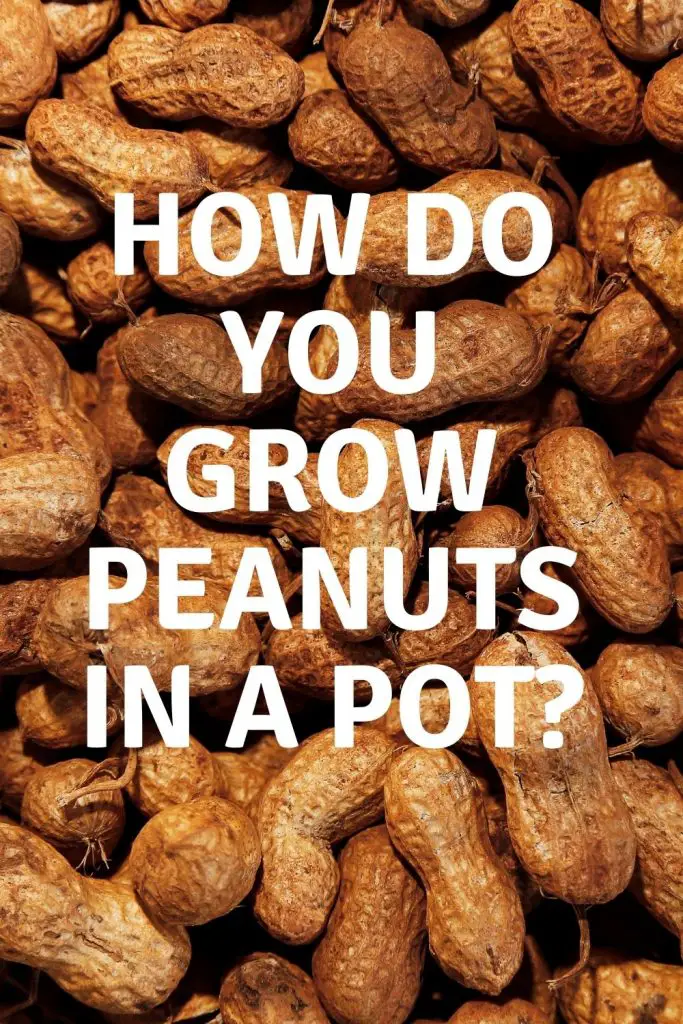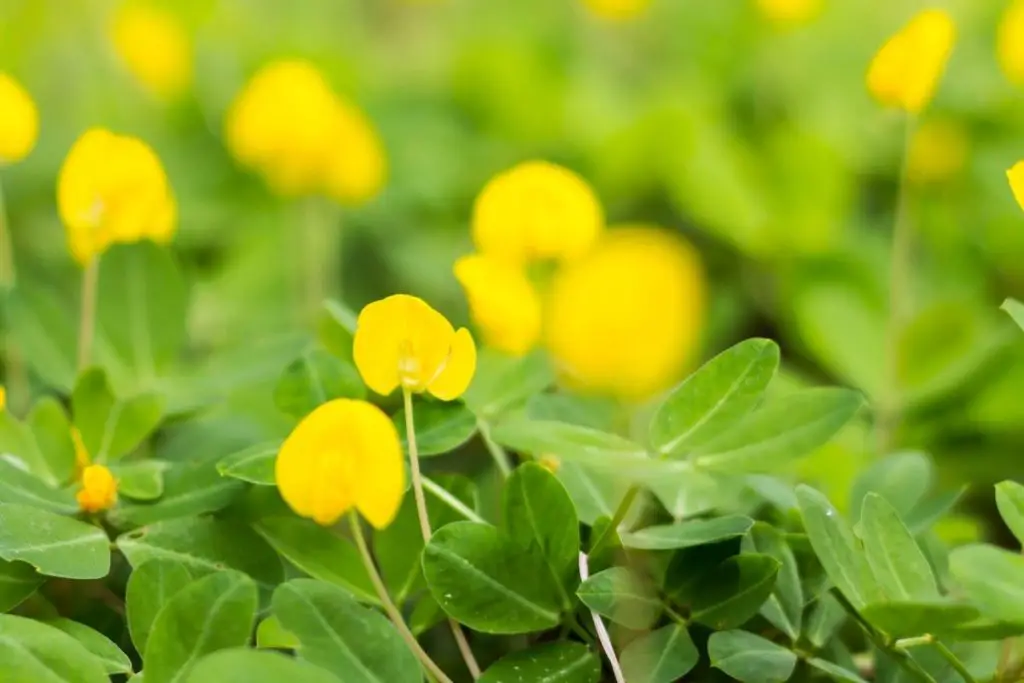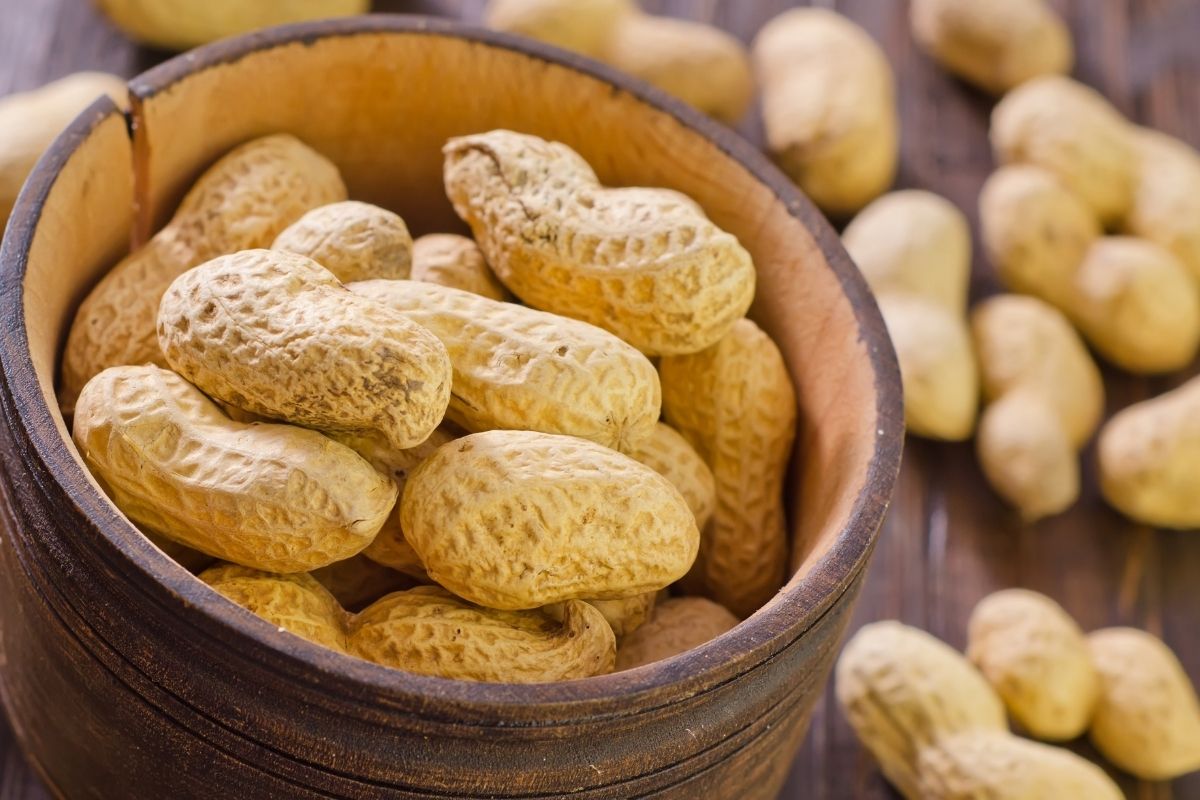Growing peanuts in pots can be a great way to have fresh, organic peanuts all year. Peanuts are actually legumes and not nuts, so they grow well with other plants in pots.
They also require less water than most vegetables which is important for gardeners who need to conserve water or live in dry climates.
This article will tell you how to grow them correctly and get the best yield from your pot.
To grow peanuts in a pot you should fill your pot with a good potting soil mix, making sure to add organic matter like compost before planting. Plant the peanuts about 2 inches apart, pointed side up and the flat sides touching each other and covered with just enough soil to cover them up gently without exerting too much pressure on them. Be patient as the peanuts require at least 6-8 weeks to germinate in the pot before you can dig down to see if they have sprouted roots or not; once they do start emerging from the soil, give them plenty of water for best results.

Where can you get peanuts for planting?
You can buy peanuts online or at some garden suppliers. You can also order them from a seed catalog or directly from peanut growers.
[amazon box=”B08YXH6KRN” template=”horizontal”]
Can I grow peanuts from the grocery store?
You can plant the raw peanuts that you buy from the store but there is no guarantee that they will grow.
You should only use peanuts that are still in their shells and you should not remove the seeds from the shells until just before you plant them.
Flavored, roasted and salted peanuts or any other form of processed peanut will not grow.
What is the best soil for growing peanuts in?
You should use a good potting soil with plenty of organic material mixed in.
No matter what type of soil you have, it is also important that the soil has been well drained so that your peanut plants do not rot from too much water or wilt from lack of moisture.
What sort of pot should I use for growing peanuts in?
You’ll need a deep pot which will allow for at least six inches of growth for the peanut roots and it should be around 8 inches to a foot deep.
Old buckets with holes drilled in the base, for drainage, are ideal as these are generally deep enough to accommodate the plant’s needs.
You can also purchase purpose made planters for peanuts too.
[amazon box=”B07DW938LK” template=”horizontal”]
How to plant peanuts?
You should plant your peanut seeds 1 to 2 inches deep and cover them with compost.
Give them a water and place the containers in a warm place as they do not tolerate cold or draughts.
The seedlings can take some time to appear so be patient.
Once the seedlings appear, give them as much light as you can but avoid direct sun.
When they get to about 1 to 2 inches tall, carefully transplant them into larger and deeper pots of good quality compost.
How to take care of your peanut plants?
As your plants grow you will begin to see small, yellow colored flowers appearing.
When these flowers fade the plant will develop tendrils, like wavy threads, that will grow back down to the soil.
These tendrils need to enter the soil to produce the peanuts and you should carefully ’till up’ the soil around the base of the plant to help this to happen.
As the peanut plant grows taller gradually draw up more compost around the base, keeping the tendrils covered. (this is a similar technique to that used for growing potatoes where the soil is drawn up around the base of the plant).
Can I use fertilizer with peanut plants?
Peanuts are members of the legumes family – the same as peas – and produce their own nitrogen on nodules on their roots.
You should choose a general purpose fertilizer that has reduced nitrogen levels.
A good choice would be this Miracle Gro Fertilizer which you can find here on Amazon.

How long do peanuts take to grow?
Peanuts should be ready for harvest anytime between 3 months and 5 months.
Times can vary depending on the weather and variety of peanut that you are growing but typically it’s between 3 to 5 months.
How do you know when the peanuts are ready to harvest?
The leaves on the plant will start to turn yellow and fall off, signalling that the peanuts are ready.
It is a good idea to pull one plant up to check on the condition of the peanuts before attempting to harvest the entire crop.
The pods should be swollen and light in color for best results.
If the pods are dark then the peanuts have over matured but are still suitable for use.
Final Words
If properly cultivated, peanuts are easy to grow and there is nothing quite like having fresh peanuts right outside your door.
They can be used in many ways such as peanut butter or you can roast them for a delicious snack.
Growing your own peanuts is also a great educational experience for children and will teach them how to care for a plant and they’ll reap the rewards of fresh peanuts at the end of the growing period.




